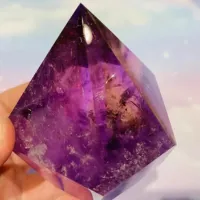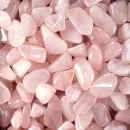Quartz gemstone, one of the most abundant minerals on Earth, is a versatile gem prized for its beauty, durability and variety of colors. Found in a variety of formations, from geodes to clusters, quartz can be transparent, translucent, or opaque, displaying every imaginable color. Below, we will discover an A-Z guide to the different types of quartz, their origins, how they are mined, and why they are valuable.
A-Z Types of Quartz Gemstone
| Type | Origin | Colors |
| Amethyst | Brazil, Uruguay | Purple, violet |
| Ametrine | Bolivia | Yellow, purple (combination) |
| Aventurine | India, Brazil | Green, blue, orange |
| Blue Quartz | Brazil, Russia | Light to deep blue |
| Citrine | Brazil, Madagascar | Yellow, orange |
| Chalcedony | Turkey, Brazil | Light blue, white, pink |
| Herkimer Diamond | USA (New York) | Clear, colorless |
| Milky Quartz | Worldwide | White, cloudy |
| Prasiolite | Brazil | Light green |
| Rose Quartz | Madagascar, Brazil | Light to deep pink |
| Rutilated Quartz | Brazil, Madagascar | Transparent with gold inclusions |
| Smoky Quartz | Switzerland, USA | Brown, smoky gray |
| Tiger’s Eye | South Africa, India | Golden brown, red-brown |
| Tourmalinated Quartz | Brazil, Madagascar | Transparent with black inclusions |
Description and History

Amethyst
Amethyst is perhaps the most famous of Quartz varieties, revered since ancient times.Frequently found in Brazil and Uruguay, its deep purple color is due to iron and natural irradiation. This stone was often used in spiritual ritual and decorate of many cultures. Amethyst was as valuable in the past as diamonds. It’s called that due to the Greek word amethystos — or ‘not drunken’, for it was thought to prevent intoxication.

Ametrine
Ametrine is a rare combination in a single stone of the favorable yellow of Citrine and the purplish red of Amethyst. Mostly found in Bolivia, in the famous Anahí mine. The colors come from different temperatures at which the crystal forms. Ametrine is one of the rarest Quartz varieties, which is why they are also one of the most ‘crowned’ varieties.
Aventurine

Aventurine is an opaque variety of Quartz, generally green, but sometimes orange or blue, too. It is obtain mostly from India and Brazil. The tiny mineral inclusions (like mica and hematite) inside a gem’s quartz are responsible for what’s called aventurescence. Because it is beautiful, aventurine is also associated with luck and new opportunities.
Blue Quartz

Less common than its more popular, green cousin, Blue Quartz is loved for its assortment of soothing blue color. Brazil and Russia are where it is found, usually as large masses rather than as clear crystals. As Blue Quartz on the market, you will find that some of the Blue Quartz is synthetic; it is a clear Quartz that has been irradiated with gold to produce that brilliant color.
Citrine

YELLOW to ORANGE variety of Quartz, Citrine has been treasured for centuries. Most of the Citrine sold today is heat treated Amethyst or Smoky Quartz; true natural Citrine is very rare. It is mainly distributed in Brasil and Madagascar. Those familiar with Citrine will know it as a stone of positivity, warmth and abundance, which makes it a favorite for jewelry.
Rose Quartz gemstone

Soft pink is one of the most loved gemstones with the name rose quartz. It has been cherished for centuries because, found mostly in Madagascar and Brazil, it’s essentially associated with love and the emotional healing that it brings. The crystal has a delicately pink color from trace elements of titanium or manganese.
Rutilated Quartz gemstone

Striking needle like inclusions of rutile, gold or silver, give Rutilated Quartz its name. Brazil and Madagascar are the sources at which this variety is largely mined. Highly prized for high end jewelry, its unique patterns make it special. The visual appeal of the shimmering inclusions is said to help the stone’s metaphysical properties.
Smoky Quartz gemstone

Pale brown to nearly black in color, Smoky Quartz can be seen to be a very dark quartz. Regions such as Switzerland and United States is where this variety is found. The smoky hue is the result of radiation interacting with natural aluminum in the crystal. According to some, many cultures used Smoky Quartz as a sort of talisman to ward off negativity.
Tiger’s Eye

The stunning chatoyant Quartz gemstone Tiger’s Eye has silky shine and warm golden brown colors. It has been mined mainly in South Africa and India, and has been a popular jewelry choice for hundreds of years. Uniquely, it achieves its reflective effect from its fibrous structure creating a shimmering dynamic effect.
Value of Quartz gemstone
The value of Quartz depends on exactly how rare it is, how clear it is, what color it is and the like of the same. Ametrine and Rutilated Quartz are rare types worth fortunes because of its characteristic and scarcity. They are easier to acquire, more common varieties like Amethyst, Citrine and Rose Quartz are popular for their beauty and symbolism, and so are difficult to part with.
Frequently Asked Questions
1. What makes Quartz valuable? Quartz’s value is determined by its type, rarity, clarity, and color. Varieties like Amethyst, Ametrine, and Rutilated Quartz are more valuable due to their rarity and unique appearance.
2. Can Quartz be used in everyday jewelry? Yes, Quartz is a durable mineral that ranks 7 on the Mohs scale, making it suitable for everyday wear. Varieties like Amethyst, Citrine, and Smoky Quartz are often used in rings, necklaces, and bracelets.
3. Where is the best place to find Quartz? The best Quartz varieties come from Brazil, Madagascar, South Africa, and the USA. Brazil, in particular, is known for its high-quality Amethyst and Citrine deposits.
4. Is Blue Quartz natural? Natural Blue Quartz is rare, but some commercial Blue Quartz is created by irradiating clear Quartz with gold to achieve the blue hue.
In summary, Quartz is one of the most versatile and widely appreciated gemstones, offering a vast array of types, each with its unique story, color, and metaphysical properties. Its affordability, combined with beauty and durability, ensures its place in the world of gemstones.


 Arabic
Arabic Chinese (Simplified)
Chinese (Simplified) Dutch
Dutch English
English French
French German
German Hindi
Hindi Italian
Italian Portuguese
Portuguese Russian
Russian Spanish
Spanish Urdu
Urdu